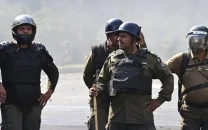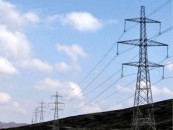‘Riverbank construction’ led to disaster
Affected residents counter claims, say deforestation to blame
1661505903-1/pakistan-floods-(2)1661505903-1-640x480.webp)
As videos of huge multi-storey concrete structures being washed away by floodwater within seconds went viral on social media, Khyber-Pakhtunkhwa officials said most of the buildings in question were hotels built along the riverbank, rather than houses.
The tourist destinations of Swat and Kalam were the first targets of what officials say was a Glacial Lake Outburst Flood (GLOF). Speaking to The Express Tribune, a senior serving K-P bureacrat who served as a deputy commissioner in Swat questioned why the Town Municipal Administration and Irrigation Department issued No Objection Certificates for multi-story buildings along the riverbank knowing that these areas are fragile.
“The British marked everything. The road is the boundary between the river and construction. I wonder who allowed construction across the road on the river banks,” the official asked. “I saw two hotels swept away by floods. Both were running on stay orders obtained from the courts. Now tell me what can I do,” he said.
The official, who hesitated to be named, said the National Engineering Services Pakistan could provide the old markings and the government could avoid destruction in the future by determining whether the land is safe from flooding. “If someone has documents, the government should should not allow concrete construction— only recreational places like parks and gardens should be allowed in these spots,” he suggested.
Other K-P officials, however, said not every concrete structure along the riverbank was destroyed. They pointed out that the Swat river had also changed course slightly, accounting for some of the destruction.
Residents however pointed the finger at deforestation for the loss of lives and property. “I have always called it a bluff — there is no sign of what they call the billion-tree tsunami,” said Musarrat Ahmadzeb, a member of the Swat Royal family who also remained a member of the National Assembly. According to him, one sapling could grip some 5 kilograms of soil around it — “a sampling, imagine what a huge tree could do.”
“Swat residents went through a similar situation in 1917 and Bacha Sahib knew only plantation could save us from floods in future. It took almost 93 years for floods to hit Swat in 2010 and a decade for the next disaster,” Zeb told The Express Tribune.
According to the forestry department officials, not every forest was owned by the government or was marked and the same is the case with Kalam. According to them, forests down the river in Bahrain and adjacent areas were protected, but not in Kalam. Even the Oshu forest was owned by the local community, department officials said.
“We have drone footage of the forests and no one can claim a lack of trees caused the massive floods. It was a cloudburst — no one could stop it,” a senior official said while requesting anonymity.
Other senior officials believe climate change is the main reason for floods across the country. “We should accept the reality that climate change is upon us. Out of season, or more than usual extreme heat, dryness and rains are clear evidence of that. Mitigation and adaptation measures should be our first priority,” said Forestry, Environment and Wildlife Department Secretary Abid Majeed.



















COMMENTS
Comments are moderated and generally will be posted if they are on-topic and not abusive.
For more information, please see our Comments FAQ